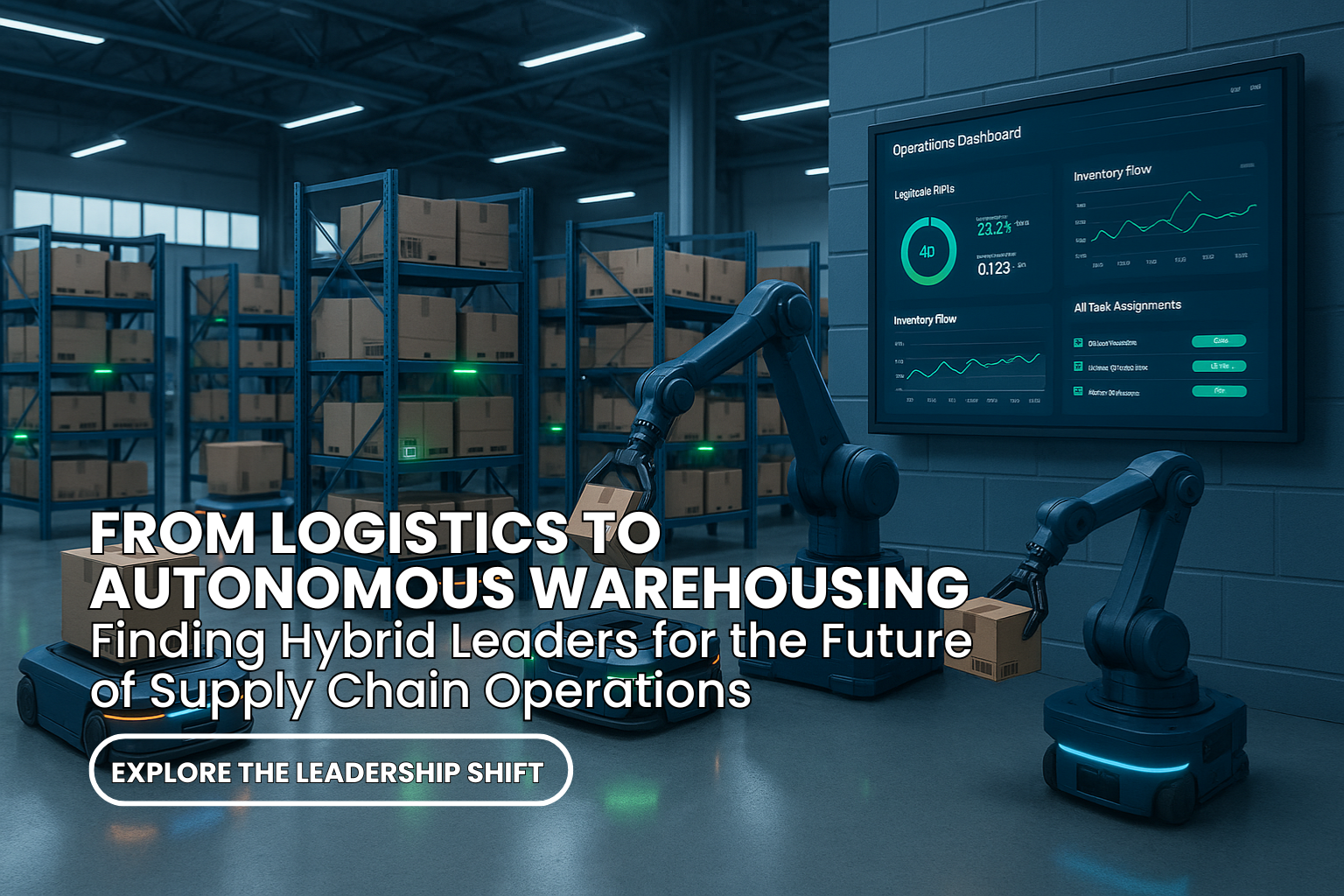Bridging the Gap: How Traditional Logistics Executives Can Lead the Autonomous Warehouse Revolution
Bridging the Gap: How Traditional Logistics Executives Can Lead the Autonomous Warehouse Revolution

The Next Frontier in Supply Chain Leadership
The global supply chain is entering its most profound transformation in decades. ⚙️ Robotics, AI, and data-driven automation are reshaping warehouses into intelligent fulfilment centres.
Yet, while the technology is ready, the biggest question remains: who is prepared to lead this new era?
At
Wyman Bain, we’ve mapped out the pathway for ambitious supply chain leaders who want to transition from traditional logistics into the fast-growing world of autonomous warehousing.
📈 Market Growth: The Autonomous Warehouse Surge
- $22.4bn → $41.1bn: Global warehouse automation market, 2023–2028 (CAGR: 12.6%)
- 60%+ of large UK operators now run automation projects, with robotics investment up 35% YoY
- <10% of senior logistics leaders have direct automation or robotics integration experience
🤔 Why the Talent Shortage?
Most logistics executives have excelled in operational excellence, workforce management, and process improvement. But autonomous fulfilment demands leaders who can combine those skills with:
- Robotics & human–machine collaboration
- AI-driven analytics & real-time decision-making
- Workforce transformation & change management
- Cybersecurity & IoT integration
The result? A critical shortage of leaders fluent in both the shop floor and the algorithms driving tomorrow’s supply chains.
🛠️ The Executive Pathway: Five Steps to Autonomous Warehouse Leadership
- Foundation Assessment – Identify gaps between current expertise and automation/AI skills.
- Technology Immersion – Engage with robotics vendors, pilots, and demos (6–12 months’ exposure builds a competitive edge).
- Cross-Functional Integration – Lead hybrid teams across IT, operations, and engineering.
- Strategic Leadership Development – Build the ROI case for automation and manage cultural change.
- Executive Readiness – Demonstrate ownership of end-to-end automation projects with P&L responsibility.
🧭 What Employers Want
Traditional Logistics vs. Autonomous Warehouse Competencies
| Traditional | Autonomous |
|---|---|
| Network design | Robotics integration |
| Inventory management | AI/ML applications |
| Labour optimisation | Human-machine collaboration |
| H&S compliance | Cybersecurity |
| Vendor management | IoT/data analytics |
Soft skills matter too: adaptability, stakeholder engagement, and a growth mindset are now essential. 🌟
💷 Figures That Matter
- £120k–£200k: Typical salary for UK autonomous warehouse leaders
- 25%+: Salary premium for executives with automation project success
- 35%: Of new warehouses (2024) specified as “automation ready”
- 80%: Of companies say leadership capability is the #1 barrier to automation success (Wyman Bain client survey, 2025)
👩💼 For Candidates: Preparing for the Shift
- Upskill: Short courses in AI, robotics, and analytics (CILT, APICS, edX)
- Network: Attend UKWA, Robotics & Automation Expo, IMHX
- Document: Build a portfolio of change/tech adoption projects
- Engage: Partner with executive search specialists bridging logistics & technology
🏢 For Employers: Attracting & Assessing Future Leaders
- Broaden your search – prioritise hybrid talent, not just logistics veterans.
- Assess for learning agility – the ability to adapt outweighs tenure.
- Invest in onboarding – provide training and peer support to accelerate new hires’ impact.
At Wyman Bain, we don’t just fill roles we future-proof leadership teams. Our research-led, transparent approach means we:
- Map the entire market
- Evaluate hybrid competencies
- Guide both clients and candidates through the automation transition
📩 Interested in building your autonomous warehouse leadership pipeline?
Contact us at
enquiries@wymanbain.com or visit
www.wymanbain.com.



